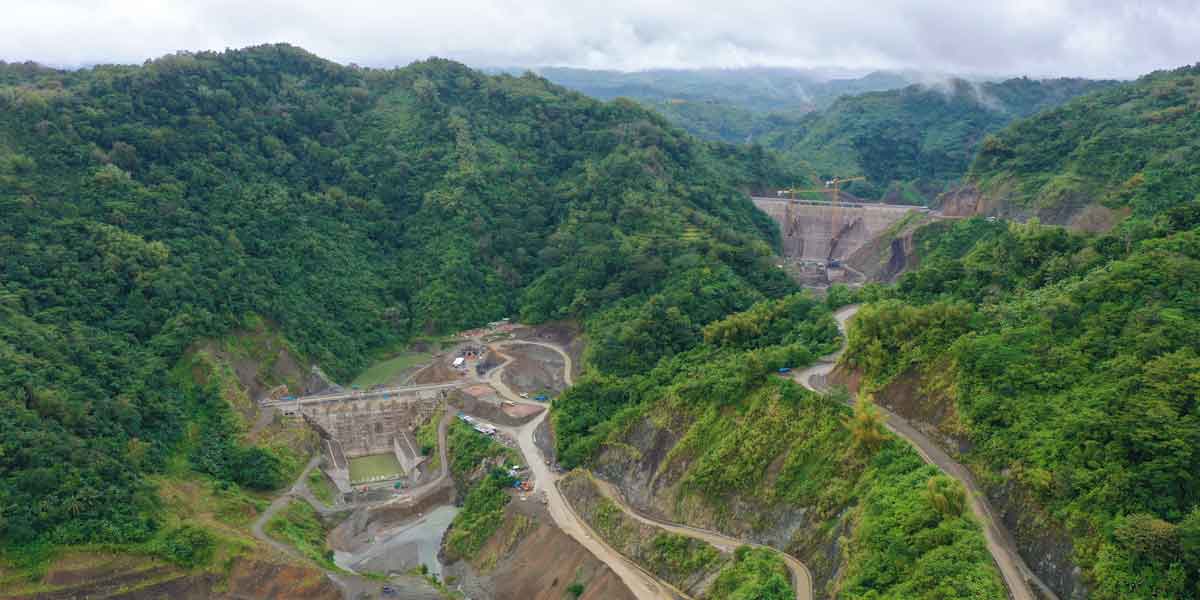By Lucio B Pitlo III
US Vice-President Kamala Harris is on a three-day visit (November 20-22) to the Philippines after attending the APEC (Asia-Pacific Economic Cooperation) Summit in Bangkok. The trip draws attention to renewed Philippine-US alliance ties under the new government in Manila.
Both sides aim to accelerate the implementation of the 2014 Enhanced Defense Cooperation Agreement (EDCA) that allows Washington to deploy troops rotationally and pre-position supplies to agreed bases in its former colony. Plans to expand these sites from five to 10 are also under way.
Harris’ planned tour demonstrates US commitment to its junior ally. But it also raises concerns about the Philippines being used as a platform to challenge China’s position over hotspots like the South China Sea and the Taiwan Strait.
Her plan to stop at Palawan, a frontline coastal province facing the South China Sea, is a big surprise. It unmistakably sends a message to Beijing as much as it reassures Manila. Such an itinerary is a major departure from the previous Duterte government’s attempts to temper military engagement with the US and play down disputes with China, its largest trade partner.
Philippine President Ferdinand Marcos Jr is scheduled to visit Beijing in early January, with trade, investment and infrastructure expected to be high on the agenda. He already met with Chinese Premier Li Keqiang on the sidelines of the ASEAN Summit in Phnom Penh and President Xi Jinping on the sidelines of the APEC gathering in Bangkok.
First visit to a frontline province
Harris will be the highest-ranking US official to visit the Philippines since Marcos took office last July and the first to visit Palawan province. She will meet with Marcos and Vice-President Sara Duterte-Carpio in Manila on Monday, and fly to Palawan the next day.
Her Palawan leg will include getting welcomed aboard the Japanese-built BRP Teresa Magbanua, the newest and biggest ship of the Philippine Coast Guard. The vessel is tasked to patrol the West Philippine Sea and escort supply ships bound for Philippine outposts in the Kalayaan in the Spratly Islands.
Harris is also due to hold meetings with Palawan’s residents and civil-society leaders. She is expected to raise the issue of illegal, unregulated, and unreported (IUU) fishing in the country’s waters.
The visit by the US vice-president projects Washington’s pledge to its Southeast Asian ally in the face of continuing threats and incidents in the South China Sea. Harris is likely to reiterate support for rules-based order in the contested sea, including adherence to a landmark 2016 arbitration award, which China continues to reject.
She may also reaffirm US support for Philippine maritime capacity-building and campaign to curb foreign illegal fishing in its western exclusive economic zone (EEZ). Her visit comes days after the US announced that it would spend $66.5 million for construction works in three of the five existing EDCA bases.
But the timing and content of her trip may invite criticism for raising the temperature in a delicate tinderbox. The visit may also bring notice to the perceived growing Philippine tilt toward the US, which may place the country at risk in light of the ongoing great-power rift.
It may also open EDCA to constitutional and legal challenges, especially from groups opposed to the presence of foreign troops and doubtful about the Philippine government’s ability to inspect US arms being shipped and stored in the country.
The choice of Palawan is deliberate and symbolic. Of the five current EDCA sites to which the US military has access, one is in Palawan, Antonio Bautista Air Base in the provincial capital Puerto Princesa. And of the five proposed additional EDCA sites, one will also be in that province.
One other expansion site being eyed is in Zambales province in western Luzon, likewise facing the South China Sea. Meanwhile, two areas are also being considered in Cagayan province in northern Luzon, directly opposite Taiwan, and another in neighboring Isabela that faces the Philippine Sea.
Such locations would enable the US to respond swiftly to contingencies in the South China Sea or the Taiwan Strait, thus raising concerns about Manila being inadvertently drawn into a US-China conflict over these flashpoints. War games and simulations suggest US troops may operate out of Luzon, putting the country in Beijing’s direct line of fire should a fight ensue.
Testing ‘friends to all and enemy to none’
The recent meeting between Presidents Joe Biden and Xi Jinping on the sidelines of the Group of Twenty Summit in Bali helped ease tensions as the US and China aimed to avoid conflict. That said, the US will continue to harness its alliances, including that with the Philippines, in its great-power competition with China. And as that rivalry intensifies, the Philippines’ space to maneuver diminishes.
In the aftermath of US House Speaker Nancy Pelosi’s visit to Taipei in August, China’s ambassador to the Philippines, Huang Xilian, reminded Manila to abide strictly by the one-China principle. In October, an unnamed senior US defense official, addressing visiting Filipino journalists, encouraged the Philippines to speak out more openly about the South China Sea arbitral ruling.
Both instances show how the bickering great powers attempt to influence Philippine foreign policy. Like many neighboring Southeast Asian countries, Manila maintains informal ties with Taipei, a key trade partner, investor, and home to more than 150,000 overseas Filipino workers. It also has a long tradition of conducting routine joint drills with allies.
At the same time, while appreciative of diplomatic support for the historic arbitration award, Manila doesn’t want to be lectured on how it should leverage the ruling in its relations with Beijing.
When elephants fight, it is always the grass that gets trampled. In any proxy war, it is always the proxy that absorbs the brunt of the casualties. Because of its geography, long-standing alliance with the US, and economic exposure to China, Manila’s desire to be “friends to all and enemy to none” will be tested.
The country does not want to be reduced to being a stage to score diplomatic points against a rival or an unwitting unsinkable aircraft carrier in the service of one protagonist. While working with allies and partners to shore up its capacity and readiness, Manila and its ASEAN neighbors continue to reach out to all parties, convinced that war is not predestined and is avoidable.






















